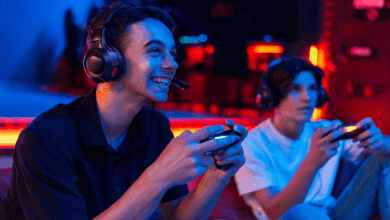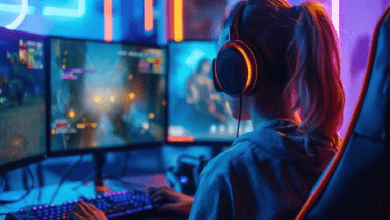
It used to be that to make a name for yourself you needed a foot in the door, a friend in the right place, or, failing that, an unshakeable ability to be in the right place at the right time. Talent helped, of course, but only in so much as it could wedge the door open before the gatekeepers slammed it shut. Now the doors are gone. Or at least they are considerably more porous, riddled with the efforts of independent creators who, thanks to artificial intelligence, are making themselves impossible to ignore.
AI as the Unwilling Co-Worker
The thing about AI is it doesn’t know nor care about the creative process. It doesn’t agonise over a well-placed comma or wrestle with an opening paragraph for the better part of a morning. It just does as it’s told which, for many creators, is exactly what they need. AI-driven tools now assist with everything from scripting videos to editing podcasts, trimming the fat from workloads and freeing up the precious hours for actual creativity.
But where AI has truly earned its place is in helping creators reach further. Algorithms are no longer just for deciding which cat video you will see next. They are smart, tuned in and freakishly good at placing content exactly where it needs to be. Take transcription software for instance. The ability to transcribe video to text is not just a convenience; it’s an accessibility game-changer. Subtitles and transcripts mean a wider audience, a broader demographic and an increased chance your work will be engaged with rather than scrolled past. AI makes this process easy, automatically converting spoken words into searchable, readable text. No more hours spent typing out dialogue – machines have taken up that job, leaving humans to do the part that actually matters.
From Small Rooms to Big Stages
Before AI, breaking into a new market meant an arduous tour, a targeted marketing budget and a thick skin. Rejection was part of the game. But AI has rewritten the script. AI tools now let creators repurpose their work for a whole new audience with the click of a button. A YouTube video recorded in English can be auto-dubbed into Spanish, French or Mandarin. A blog post written for a home audience can be localised and restructured for an international audience. In the right hands AI is less a tool and more a passport, allowing creators to travel across cultural and linguistic borders without ever leaving their desk.
And then there’s personalisation. AI doesn’t just broadcast content blind; it watches, it observes—and if you let it—it tailor’s. Recommendation engines are getting better and better at putting the right content in front of the right people. Independent musicians, filmmakers and writers no longer need a label, a studio or a publisher to reach their audience; AI does it for them. All it takes is a well-optimised piece of content and an understanding of how to play the algorithmic game.
An Unsettlingly Enthusiastic Assistant
Of course, as with all new tech, AI comes with its own set of problems. It’s helpful, yes, but it’s also relentless. It doesn’t pause for breath, nor does it believe in the concept of a weekend. It’s also a bit tone deaf. AI-generated content can be super polished but devoid of any real human sparkle, like it was put together by a well meaning but completely clueless robot. Creators need to find a balance—using AI to enhance not replace their creative instincts.
Then there’s the not-so-small matter of over-reliance. Just look at the sheer number of AI generated e-books flooding online marketplaces to see the downside. When it gets too automated, too mechanical the result is content that feels hollow. Smart creators know that AI is best used as an assistant not a substitute. It can write an article but it can’t tell a story. It can suggest a melody but it can’t compose a symphony with heart.
The Future of AI and Creativity
Who knows what’s next? AI is evolving so fast even its developers can’t keep up. Today, it’s helping creators find new audiences, automate tedious tasks and reach further. Tomorrow, it may be doing things we haven’t even thought of yet. Will it be even more of a force for creativity or will it homogenise content to the point where everything looks and sounds the same?
For now, the trick is how you use it. Those who approach AI with curiosity not fear, who see it as a tool not a threat will have an advantage. It’s not about replacing human creativity but amplifying it, cutting away the noise and letting the good stuff shine through.
And until then, it’s worth remembering that AI, for all its speed, is still often silly. Just look at an AI-generated image with extra fingers and wonky faces. Human creations still win, but there’s no harm in getting assistance from programmes that are dependable and efficient.




